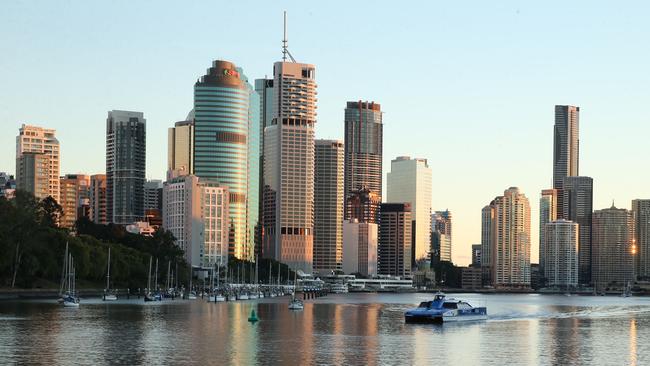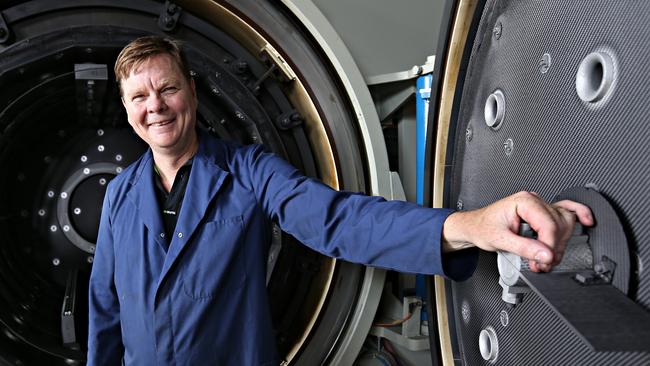Future Brisbane: The growth of Brisbane has been an extraordinary journey
FROM a mangrove-shrouded hamlet to a nerve centre of the Asia-Pacific — Brisbane’s evolution has been extraordinary.
Future Brisbane
Don't miss out on the headlines from Future Brisbane. Followed categories will be added to My News.
- A big country town no more
- Housing is Brisbane’s best weapon
- Clear view of Brisbane’s future
- Look ahead without losing the past
FROM a mangrove-shrouded hamlet to a nerve centre of the Asia-Pacific; from an outdoor prison for hardened recidivists to a centre of culture and learning; and from an isolated backwater to Australia’s third most populous city — Brisbane’s evolution has been extraordinary.
Our journey from a few shanties on Redcliffe’s Humpybong Creek would have been inconceivable to John Oxley, when he sailed up the Brisbane River just before Christmas 1823 and decided the place was perfect for a convict colony.

Brisbane now sprawls across 1338sq km, soars one quarter of a kilometre into the sky at the top level of the Tower of Power, and funnels motorists 60m under the earth through a maze of tunnels.
For nearly a century the “war room” for Brisbane’s development has been the mayor’s office in City Hall — that Italian Renaissance-style building in King George Square which opened its doors just as the Great Depression hit in 1930.
Just 36 people have worn the mayoral robes since Federation and most, like William Alfred Jolly and Clem Jones, are only reanimated in our collective memory when we cross a city bridge or enter a tunnel.
Three talented figures have emerged over three decades as the chief architects and engravers of our new world.
Sallyanne Atkinson, Jim Soorley and Campbell Newman oversaw dazzling transformations in Brisbane’s cultural and physical landscape and their handiwork will, in turn, serve as the launch pad for an extraordinary future.
The trio put a focus on the river, enlarged and modernised transport and brought a re-intensification to many inner suburbs.
When Atkinson arrived in City Hall in 1985 Brisbane appeared to switch, almost overnight, from a black and white reel to glorious technicolour.
Articulate and self-assured, Atkinson saw the potential of the European-inspired notion of alfresco dining in a subtropical city and in 1989 established the “Inner Suburbs Action Study’’ which set the scene for successors to revitalise the inner suburbs and soared to international stardom during World Expo 88.
It was those more intangible aspects of her vibrant personality which conferred on Brisbane its first dab of international gloss.
Soorley, the blunt-talking Catholic priest who saw off Atkinson in 1991, introduced a vigorous management style into the office influenced by his life in the private sector.

His great achievement, among many, was energising the river — those CityCats prowling across the waters a daily reminder of the tenacity of the man.
In 2004 Newman, the can-do army engineer, brought an energiser bunny enthusiasm to the role. His signature policy was transport as he tunnelled to bring us the Clem7, Legacy Way and the state-funded Airport Link tunnels.
City Hall’s latest inhabitant, the imperturbable Graham Quirk, has a long-term vision, partly because he stands on the shoulders of giants.
Quirk, who took office in 2011, is meeting many challenges but one is simple demographics — specifically our ageing population.

In the 12 months to September, his administration will have approved 19 applications for aged care facilities. Quirk did it partly by slashing development infrastructure charges by 33 per cent for a three-year period and relaxing height restrictions in medium and high-density locations.
He put a temporary freeze on infrastructure charges and within three years an extra 575 rooms had materialised after high-end hotel chains saw an opportunity. His administration injected youthful vigour into the city via 13,000 beds for students. Work is under way on the $3 billion Queens Wharf integrated casino-resort precinct and in the years ahead in Roma St will emerge “Brisbane Live” — a $2 billion ultra-entertainment hub billed as similar to New York’s Madison Square Garden.
Quirk has a second vision of a hi-tech transport system ferrying people to and from the bustling precinct. That system is called Brisbane Metro — a high-frequency public transport service designed to accommodate up to 150 people on 60 vehicles dispatched every three minutes at peak periods. Cross River Rail’s tunnel and underground stations network, will also transform train travel.
Throw in a cruise ship terminal and a second runway boosting Brisbane Airport’s capacity beyond that of Singapore and Hong Kong, and you see the emerging outlines of Brisbane’s 21st century face.



